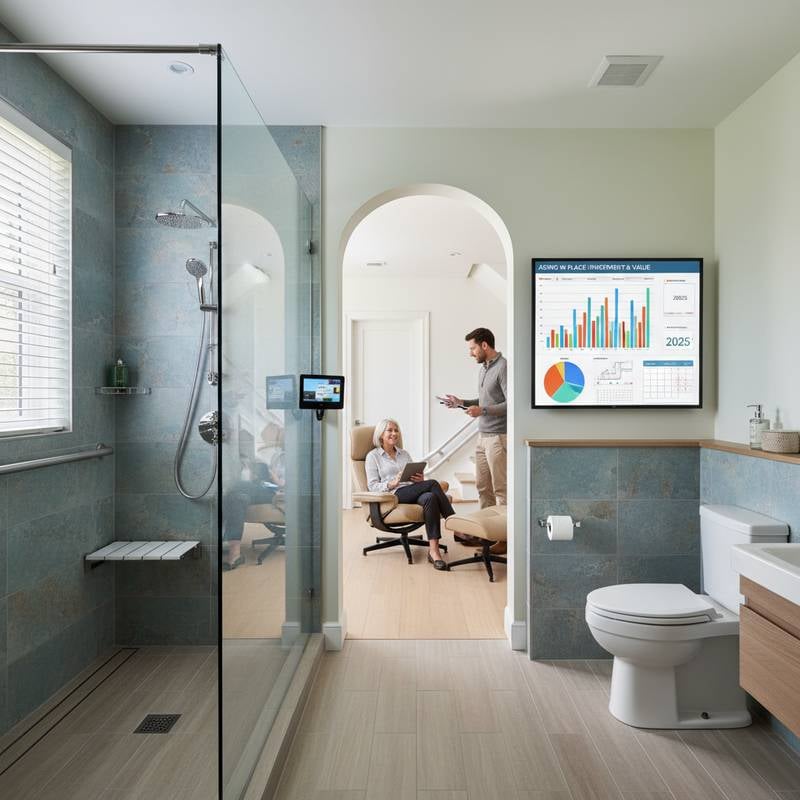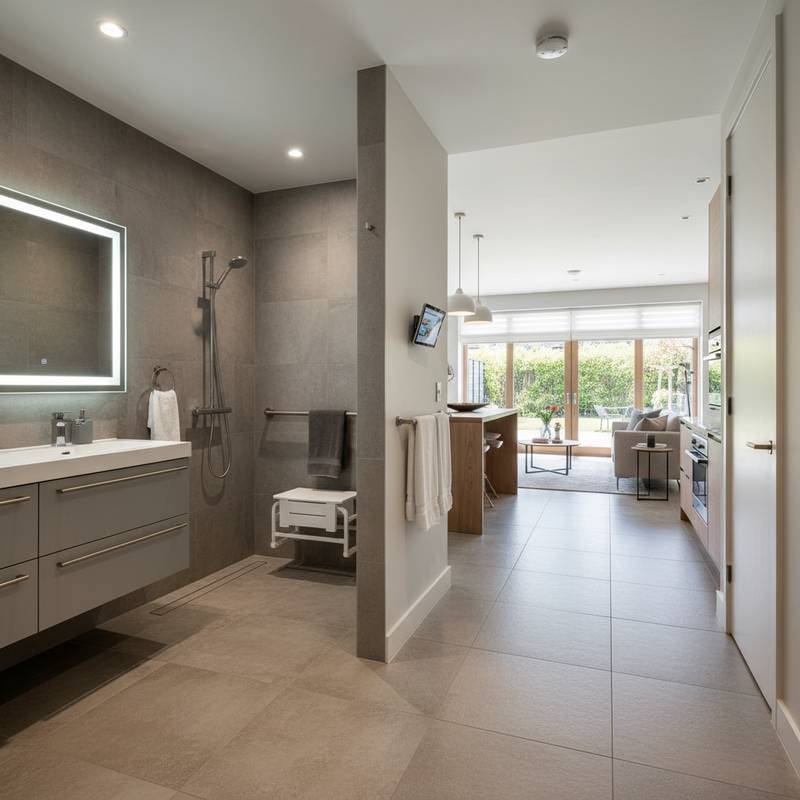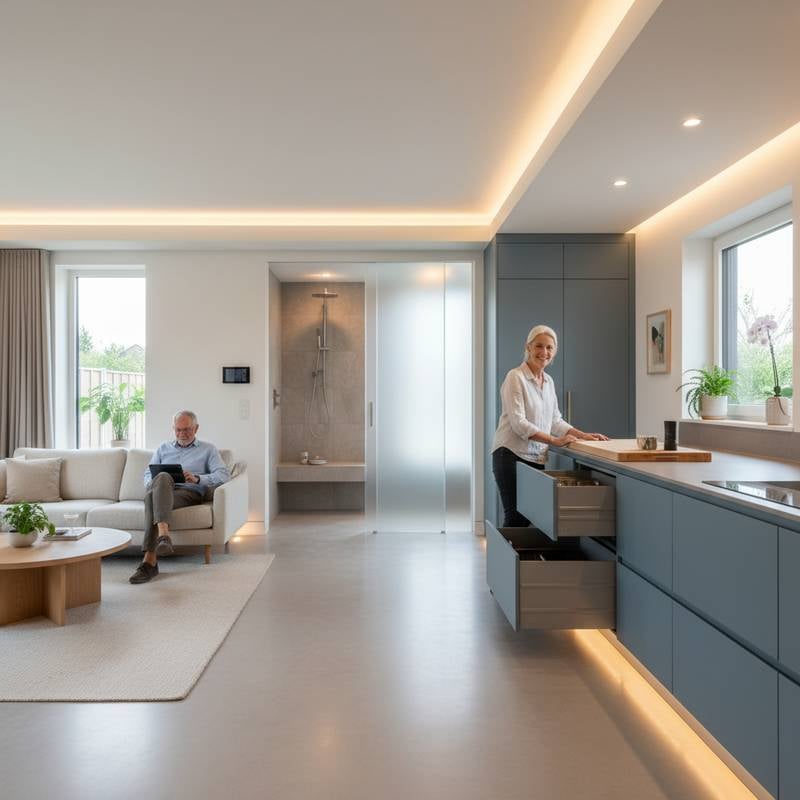Complete Aging-in-Place Remodeling Costs & Features Guide
Aging-in-place remodeling helps you stay in your home safely and comfortably as your needs change. This guide explains what features make a home accessible, how much common updates cost, and how to plan a remodel that supports independence without sacrificing style.
Why Aging-in-Place Design Matters
Aging-in-place design focuses on accessibility, safety, and ease of use. The goal is to make everyday activities simpler while maintaining the look and feel of a traditional home. It combines universal design principles, which work for people of all ages and abilities, with durable materials and smart layouts.
The Core Principles of Accessible Remodeling
Accessibility remodeling is about creating freedom of movement and comfort. The most effective projects follow three core design ideas:
- Zero Barriers: Smooth transitions between rooms and outdoor spaces prevent tripping and make movement easier for walkers or wheelchairs.
- Reachable Design: Counters, switches, and shelves placed at practical heights reduce strain and allow independent living.
- Safety Enhancements: Non-slip materials, grab bars, and better lighting reduce fall risks and improve everyday confidence.
Each principle can be adapted to suit your home’s layout and your personal needs.
2. Bathroom Accessibility Features
Bathrooms are often the first space to remodel for aging in place. Key improvements include curbless showers, grab bars, and comfort-height toilets. Slip-resistant flooring is essential for safety.
Why it works: These features prevent slips and make bathing safer and more comfortable.
Pairing ideas: Combine large-format tiles with contrasting grout to improve depth perception. Add a handheld showerhead and built-in bench for flexibility.
Typical cost: Depending on size and materials, bathroom remodels vary from modest updates to full accessible designs.
4. Wider Doorways and Hallways
Narrow hallways or doorways can limit mobility. Expanding them improves traffic flow and allows easier access throughout the home.
Why it works: It supports wheelchair use and creates a more open feel.
Pairing ideas: Choose consistent flooring materials across rooms to create smooth transitions.
Typical cost: Doorway widening projects vary by structure, but interior changes usually cost less than exterior structural work.
6. Flooring for Stability and Comfort
Low-pile carpet, rubber flooring, or textured vinyl help prevent slips. Avoid high thresholds or uneven transitions between rooms.
Why it works: Smooth, stable surfaces reduce the risk of tripping.
Pairing ideas: Select colors that contrast slightly with walls to define boundaries clearly.
Typical cost: Flooring replacement varies based on material, but safety flooring options are available across budgets.
8. Bedroom and Living Area Adjustments
Bedrooms should offer easy access and comfort. Consider wider clearances around the bed, reachable closet storage, and adjustable beds. Living spaces benefit from furniture with firm cushions and stable arms for support.
Why it works: These changes make rest and relaxation easier while maintaining an inviting atmosphere.
Pairing ideas: Use soft, diffused lighting to create a calm environment.
Typical cost: Most bedroom updates are moderate unless major construction is needed.
Cost Planning and Practical Considerations
Every home and budget is different. Aging-in-place remodeling often combines small updates and major projects over time. Here are key cost and planning factors to consider:
- Scope of Work: A single-room remodel costs less than whole-home accessibility updates.
- Material Choices: Durable, low-maintenance materials may require a higher upfront investment but reduce long-term upkeep.
- Professional Labor: Licensed contractors familiar with accessibility guidelines ensure safe and code-compliant installations.
- DIY Potential: Simple updates like grab bars or lighting changes are manageable for many homeowners. Structural changes, plumbing, or electrical work should be handled by professionals.
- Financing Options: Some local programs or grants may help offset costs for accessibility improvements.
Aging-in-place design should evolve with your needs, so consider remodeling in phases. Start with areas that affect daily comfort most, such as the bathroom or entryway, then move toward larger updates like kitchen layouts or flooring.
Living Comfortably with Your Remodel
An aging-in-place remodel is an investment in independence and peace of mind. Thoughtful design choices can blend seamlessly with your home’s existing character while improving safety and ease of use. By planning carefully, prioritizing essential updates, and working with experienced professionals, you can create a space that feels both timeless and practical.
Whether you are preparing for the future or accommodating current mobility needs, an accessible home offers freedom and flexibility. With each thoughtful renovation, you build a foundation for comfort, confidence, and long-term enjoyment in the place you love most.











